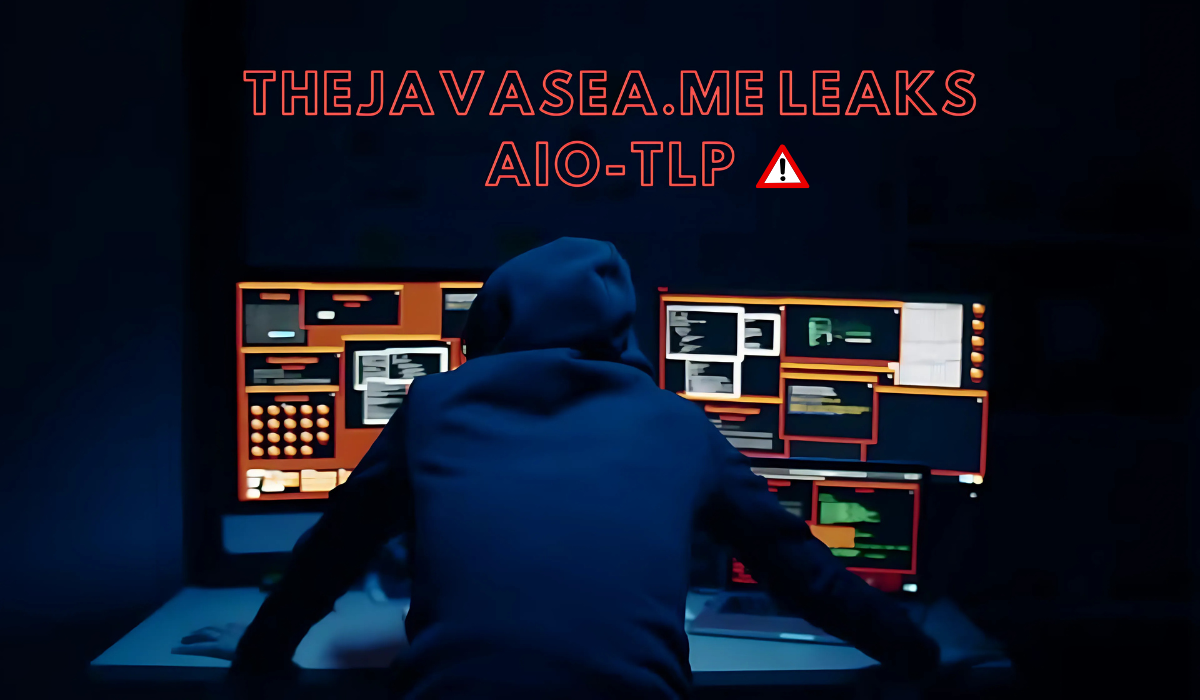The website thejavasea.me has recently been in the spotlight due to leaks involving the AIO-TLP, sparking widespread concern across the digital landscape. Whether you’re a cybersecurity enthusiast, a digital privacy advocate, or simply someone curious about how these systems operate, understanding the implications of Thejavasea.me Leaks Aio-TLP is crucial. This blog post aims to provide a comprehensive overview of the leaked information and explore strategies to safeguard your data in today’s digital age.
Understanding Thejavasea.me Leaks Aio-TLP
Before we dive into the recent leak, let’s clarify what the AIO-TLP is:
- AIO-TLP (All-In-One Threat Level Protocol) is a cybersecurity framework used to assess and categorize the severity and sensitivity of data breaches. This protocol helps organizations prioritize their response to leaks and protect critical information.
Thejavasea.me has garnered attention as a platform for sharing leaked sensitive data, including personal and business details that many would prefer stayed under lock and key. From cybersecurity breaches to proprietary corporate data, the leaks spread across this site highlight a growing challenge in our increasingly digital world.
The Significant Implications of AIO-TLP Leaks
The leaks on thejavasea.me underscore several critical issues:
- Privacy Violations: When personal data, such as phone numbers and addresses, are leaked, it poses a significant threat to individual privacy. This can lead to identity theft, as well as financial and reputational damage to both individuals and businesses.
- Corporate Espionage: Leaked proprietary data can be detrimental to businesses. Competitors can exploit this information, leading to a loss of competitive advantage and substantial financial losses.
- National Security Risks: Some leaks involve sensitive governmental data, which can lead to national security threats. These leaks could provide malicious actors with information to develop targeted cyberattacks.
How Do Leaks Occur?
Understanding how these data leaks occur can empower you to take preventive steps. Here are some common scenarios:
- Phishing Attacks: Cybercriminals deploy phishing emails that impersonate legitimate sources to trick recipients into divulging personal information.
- Weak Passwords: Many individuals use easily-guessable passwords or reuse the same passwords across multiple accounts, making their data vulnerable.
- Lack of Multi-Factor Authentication: This extra layer of security is essential. Regardless of whether a secret phrase is compromised, an extra type of check can forestall unapproved access.
- Unpatched Software: Failing to update software can leave systems open to known vulnerabilities that hackers can exploit.
Protecting Yourself from Future Leaks
While leaks like those from Thejavasea.me Leaks Aio-TLP emphasize the critical nature of cybersecurity, there are several steps you can take to protect your information:
- Strong Passwords: Use long, complex passwords that combine letters, numbers, and symbols, and avoid using the same password across different sites.
- Enable Multi-Factor Authentication (MFA): This adds an extra step in verifying your identity and is an effective way to safeguard your accounts.
- Software Updates Ensure that your software and applications are always up-to-date to protect against security weaknesses.
- Phishing Awareness Be vigilant about phishing attempts. Confirm the source prior to tapping on connections or opening connections in messages.
- Utilize Cybersecurity Tools Employ reliable cybersecurity tools that can help detect and prevent potential threats.
The Cybersecurity Community’s Role
The ramifications of AIO-TLP leaks extend beyond immediate privacy concerns, encouraging a collective call to action for increased cybersecurity. Collaboration among individuals, corporations, and governments is essential to combat the perpetual threat of cybercrime.
Steps to Safeguard Your Information
Despite the challenges posed by these leaks, you can take proactive steps to protect your information:
1. Use Strong, Unique Passwords
A solid secret phrase is your most memorable line of guard. Utilize a blend of letters, numbers, and images, and try not to involve similar secret phrase for different records.
2. Enable Two-Factor Authentication (2FA)
Even if your password is compromised, the second verification form can prevent unauthorized access. Many services offer 2FA, making your accounts significantly more secure.
3. Keep Software Up-to-date
Regular software updates fix vulnerabilities hackers might exploit. Continuously update your working framework, applications, and antivirus programming.
4. Be Wary of Phishing Scams
Phishing messages and messages stunt you into uncovering individual data. Continuously confirm the source’s email address and never click on dubious connections.
5. Monitor Your Accounts
Regularly check your accounts for suspicious activity. If something doesn’t look right, take action immediately, such as changing your passwords and reporting the issue to the service provider.
Take Control of Your Cybersecurity Today
At this juncture, remaining passive in the wake of data leaks is no longer an option. Ensure your safety by implementing the strategies we’ve outlined here. Ignoring cybersecurity can expose you or your business to the kind of threats exemplified by Thejavasea.me Leaks Aio-TLP, so act now.
FAQs About Thejavasea.me Leaks Aio-TLP
Q1. What is a data leak?
A data leak occurs when confidential information is released to an untrusted environment due to a security lapse or breach.
Q2. How do I know if my data has been leaked?
There are online services designed to alert you if your information has been exposed in a data breach. Using these tools regularly can help you stay informed.
Q3. What should I do if my data has been leaked?
Immediately change your passwords, activate MFA on your accounts, and monitor your financial accounts for unusual activity. Inform the relevant authorities and seek help from cybersecurity professionals if needed.
Q4. Can a leak be prevented entirely?
While no method is foolproof, diligent monitoring and employing enhanced security measures significantly reduce the chances of a leak.

